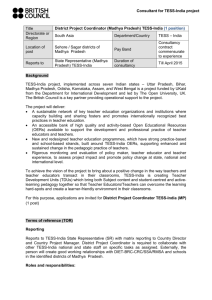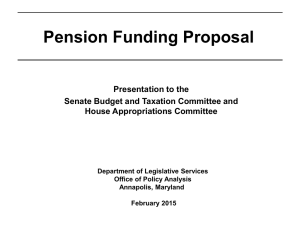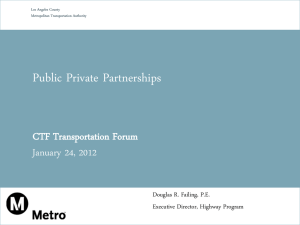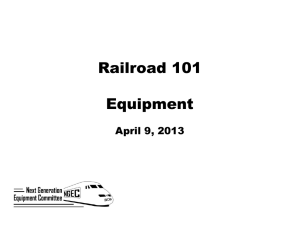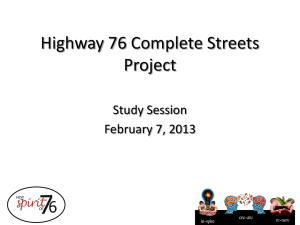Brief on Industrial Corridors(English Version)
advertisement
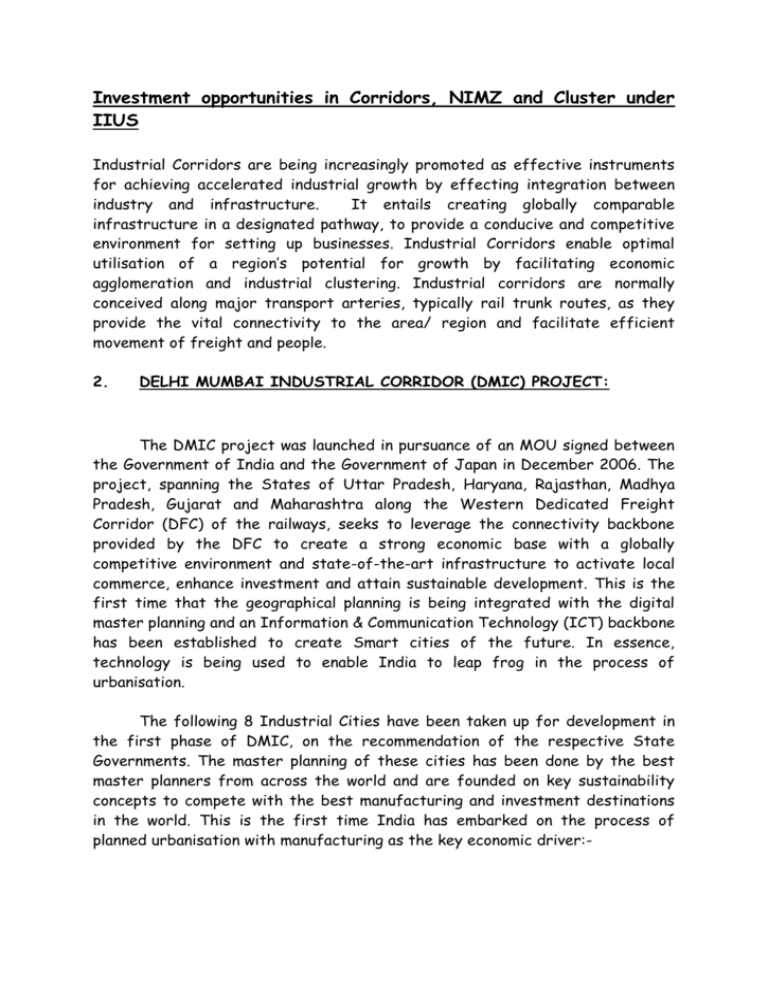
Investment opportunities in Corridors, NIMZ and Cluster under IIUS Industrial Corridors are being increasingly promoted as effective instruments for achieving accelerated industrial growth by effecting integration between industry and infrastructure. It entails creating globally comparable infrastructure in a designated pathway, to provide a conducive and competitive environment for setting up businesses. Industrial Corridors enable optimal utilisation of a region’s potential for growth by facilitating economic agglomeration and industrial clustering. Industrial corridors are normally conceived along major transport arteries, typically rail trunk routes, as they provide the vital connectivity to the area/ region and facilitate efficient movement of freight and people. 2. DELHI MUMBAI INDUSTRIAL CORRIDOR (DMIC) PROJECT: The DMIC project was launched in pursuance of an MOU signed between the Government of India and the Government of Japan in December 2006. The project, spanning the States of Uttar Pradesh, Haryana, Rajasthan, Madhya Pradesh, Gujarat and Maharashtra along the Western Dedicated Freight Corridor (DFC) of the railways, seeks to leverage the connectivity backbone provided by the DFC to create a strong economic base with a globally competitive environment and state-of-the-art infrastructure to activate local commerce, enhance investment and attain sustainable development. This is the first time that the geographical planning is being integrated with the digital master planning and an Information & Communication Technology (ICT) backbone has been established to create Smart cities of the future. In essence, technology is being used to enable India to leap frog in the process of urbanisation. The following 8 Industrial Cities have been taken up for development in the first phase of DMIC, on the recommendation of the respective State Governments. The master planning of these cities has been done by the best master planners from across the world and are founded on key sustainability concepts to compete with the best manufacturing and investment destinations in the world. This is the first time India has embarked on the process of planned urbanisation with manufacturing as the key economic driver:- Name of the Node State Area (in Sq.km.) Project Master Planners Dadri-NoidaGhaziabad Investment Region Uttar Pradesh 210 Halcrow, UK, Synoate and Knight Frank Manesar-Bawal Investment Region Haryana 402 Jurong, KPMG and DTZ KhushkheraBhiwadi-Neemrana Investment Region Rajasthan 165 Kuiper Compagnons, DHV, Cushman & Wakefield and ECORYS Pithampur-DharMadhya Mhow Investment Pradesh Region 372 Lea Associates South Asia Pvt Ltd in association with Development and Research Service Pvt Ltd. Ahmedabad-Dholera Gujarat Investment Region 920 Halcrow, UK, Synoate and Knight Frank Shendra Bidkin Maharashtr Investment Region a 84 AECOM Asia Ltd, RMSI, International AECOM India. Company Colliers and Dighi Port Maharashtr Industrial Area a 253 AECOM Asia Ltd, RMSI, International AECOM India. Company Colliers and Jodhpur Marwar Area 155 Parsons Brinckerhoff Pali Rajasthan Industrial The master plans for all the nodes except Dadri Noida Ghaziabad Investment Region in Uttar Pradesh and Jodhpur Pali Marwar Industrial Area in Rajasthan has been completed and accepted by the State Government. Land acquisition for the new industrial regions/ areas as well as for the Early Bird Projects identified for development as model initiatives are at advanced stages of progress in different States. In case of Dholera and Shendra, preliminary engineering of the trunk infrastructure (drainage, sewerage, solid waste, ICT, road, lighting etc.) is presently underway. Government of India has created a DMIC Project Implementation Trust Fund with a corpus of Rs.17,500 crores to be utilized over a period of five years and an additional Project Development Fund of Rs. 1000 crore for undertaking project development activities. This will be utilised as a Revolving corpus and the Trust would leverage the resources provided by Government of India to raise long term funding from financial institutions (World Bank, ADB & Capital Bond Markets) for supporting the development of DMIC cities. Government of Japan has also agreed to provide funding of USD 4.5 billion through a mix of JICA and JBIC lending for various projects being developed in the Phase-1 of DMIC Project. In this regard a Special Rolling Plan is being finalized by Ministry of Finance. Following project proposals have been fully structured and are at different stages of implementation: i. ii. iii. iv. v. vi. Model Solar Project at Neemrana, Rajasthan; Water Desalination Project at Dahej, Gujarat; Logistics Data Bank for DMIC Region; Integrated Industrial Township at Greater Noida, U.P.; Vikram Udyogpuri (formerly Knowledge City), Ujjain, Madhya Pradesh; Water Supply to Pithampur from Narmada-Kshipra Canal, Madhya Pradesh; vii. Rail connectivity from Bhimnath to Dholera, Gujarat; viii. Multi Modal Logistics Hub Project at Greater Noida, UP (In principle approval); ix. Integrated Multi Modal Logistics Hub Project at Rewari, Haryana (In principle approval). About 35-40% projects are trunk infrastructure projects for which funds are provided by Government of India through DMIC Trust. The balance 60-65% projects are being structured under Public Private Partnership (PPP). The project will throw up vast opportunities in the areas of PPP, Contractors/Consultants, O&M Operators, Equipment Suppliers, Rolling Stock Suppliers and financing across the value chain. 3. CHENNAI-BENGALURU INDUSTRIAL CORRIDOR (CBIC): During the Summit Meeting held between India and Japan in December 2011, the Prime Ministers of both countries decided to strengthen efforts to improve infrastructure in Chennai Bangalore area and directed to operationalise the modalities for preparation of the Comprehensive Integrated Master Plan for development of Chennai Bangalore Industrial Corridor (CBIC). The corridor between Chennai-Benagluru-Chitradurga (around 560 km) would have an Influence Area spread across the States of Karnataka, Andhra Pradesh and Tamil Nadu. JICA has identified a total of 25 priority projects in the CBIC region for debottlenecking infrastructure. The Master Planning for three nodes namely Tumkur ( Karnataka), Ponneri ( Tamil Nadu) and Krishnapatnam ( Andhra Pradesh) has been initiated under JICA assistance. 4. East Coast Economic Corridor (ECEC) Project A Concept note prepared by Asian Development Bank on East Cost Economic Corridor linking Kolkata Chennai- Tuticorin has been considered and it has been decided to get a feasibility study done with the help of Asian Development Bank in respect of the corridor. In compliance of the commitment made by the Central Government in the Andhra Pradesh Reorganisation Act, 2014, it has also been decided that in the first phase of the study, Asian Development Bank will focus on the Vizag- Chennai Section. ADB has submitted the Inception Report. The Conceptual Development Plan on the Vizag-Chennai corridor will be submitted by them by early October 2014. 5. AMRITSAR KOLKATA INDUSTRIAL CORRIDOR (AKIC): In order to give a boost to industrial development in the densely populated States of Northern and Eastern India, the Prime Minister has approved to commence preparatory work on creating an Amritsar Kolkata Industrial Corridor (AKIC) will be structured around the Eastern Dedicated Freight Corridor (EDFC) as the backbone and also the Highway system that exists on this route. The AKIC will also leverage the Inland Water System being developed along National Waterway-1 which extends from Allahabad to Haldia. The AKIC will cover the seven states namely Punjab, Haryana, Uttar Pradesh, Uttarkhand, Bihar, Jharkhand and West Bengal. The Cabinet in principle approved the AKIC project on 20th January, 2014. The Feasibility Study of Amritsar-Kolkata Industrial Corridor (AKIC) is in progress. 6. North East Myanmar Industrial Corridor: It has been observed from the Tokyo Declaration for India-Japan Special Strategic and Global Partnership which was held on September , 2014 that “The two Prime Ministers placed special emphasis on Japan's cooperation for enhanced connectivity and development in Northeast India and linking the region to other economic corridors in India and to Southeast Asia, which would catalyse economic development and increase prosperity in the region” In pursuance of above decision, this department is in process of obtaining comments/inputs from the JICA study team and also from ADB. 7. BANGALORE-MUMBAI ECONOMIC CORRIDOR(BMEC) PROJECT During the Summit meeting held between India and United Kingdom in February, 2013, the Prime Ministers of both the countries welcomed the development in cooperation on infrastructure since the last summit. They noted UK’s interest in cooperating with India for the development of a new Bengaluru-Mumbai Economic Corridor (BMEC). The leaders agreed to examine and evolve the modalities and content of a feasibility study of this project concept through mutual discussions and to work out a roadmap for a possible partnership in this area. DMICDC Ltd. on behalf of DIPP acts as the nodal agency for the preparation of the perspective plan for the project. BMEC Corridor region proposed along the Bangalore – Mumbai part of NH4, Bangalore- Mumbai rail link & Dabhol- Bangalore Gas Pipeline covers the States of Karnataka & Maharashtra and is expected to influence an area of 1.4 lakh sq.km. covering 26 districts with 145 sub districts with a population of 79 million. The proposed BMEC region is being developed with an objective of transforming the region into a globally competitive manufacturing and investment destination through sustainable development. The consultant has been appointed for the preparation of the Perspective Plan for BMEC region and is currently in the process of identifying potential industrial nodes across the corridor region. The feasibility of developing High Speed Rail connectivity between Bangalore & Mumbai which is also part of the Diamond Quadrilateral rail corridor, Greenfield Port developments, Establishing Ports connectivity between the BMEC region and the ports of Western Coast including Dedicated Freight Corridor, Major Power Project etc. is also being assesses as part of the Corridor. Steel, Aerospace, Defence & Space, Automobile, Medical Equipment, Advanced Robotics, Textile, Mining & Food Processing etc. are identified as potential Industrial Sectors of the region. 8. NATIONAL MANUFACTURING POLICY In order to uplift the business sentiment and boost investment, the Government of India has notified a National Manufacturing Policy (NMP) vide a Press Note dated 4th November, 2011 with the objective of enhancing the share of manufacturing in GDP to 25% and creating 100 million jobs over a decade or so. The policy is based on the principle of industrial growth in partnership with the States. The Central Government will create the enabling policy frame work, provide incentives for infrastructure development on a Public Private Partnership (PPP) basis through appropriate financing instruments, and State Governments will be encouraged to adopt the instrumentalities provided in the policy. The instrumentalities of NMP include setting up of National Investment and Manufacturing Zones (NIMZ) and support to clusters. NIMZs have been conceived as large integrated industrial townships with stateof-the-art infrastructure; land use on the basis of zoning; clean and energy efficient technology; necessary social infrastructure; skill development facilities, etc. to provide a conducive environment for manufacturing industries. To enable the NIMZ to function as a self-governing and autonomous body, it will be declared by the State Government as a Industrial Township under Article 243 Q (1)(c) of the Constitution. These NIMZs would be managed by a Special Purpose Vehicle (SPV) which would ensure master planning of the zone; preclearances for setting up the industrial units to be located within the zone and undertake such other functions as specified in the various section of the policy. The policy mandates that the SPV in a zone will be headed by a senior government official and will include inter-alia an official expert conversant with the work relating to pollution control/environmental protection. The NIMZs would be different from SEZs in terms of size; level of infrastructure planning; governance structures related to regulatory procedures; exit policies; fiscal incentives, etc. The proposals in the policy are generally sector neutral, location neutral and technology neutral except incentivization of green technology. While the National Investment and Manufacturing Zones (NIMZs) are an important instrumentality, the proposals contained in the Policy apply to manufacturing industry throughout the country including wherever industry is able to organize itself into clusters and adopt a model of self-regulation as enunciated in the policy. Nine NIMZs outside the Delhi Mumbai Industrial Corridor (DMIC) region have been given in-principle approval (i) Nagpur in Maharashtra; (ii) Tumkur in Karnataka ;(iii)Bidar in Karnataka; (iv) Kolar in Karnataka; (v) Gulabarga in Karnataka; (vi) Chittoor in Andhra Pradesh (vii) Medak in Telangana; (viii) Prakasam in Andhra Pradesh; and (ix) Kalinganagar, Jajpur district in Odisha. Eight Investment Regions along the Delhi Mumbai Industrial Corridor (DMIC) project nodes have also been accorded in principle approval as NIMZs. The details are as under: i. Ahmedabad-Dholera Investment Region, Gujarat ii. Shendra-Bidkin Industrial Park city near Aurangabad, Maharashtra iii. Manesar-Bawal Investment Region, Haryana iv. Khushkhera-Bhiwadi-Neemrana Investment Region, Rajasthan v. Pithampur-Dhar-Mhow Investment Region, Madhya Pradesh vi. Dadri-Noida-Ghaziabad Investment Region, Uttar Pradesh vii. Dighi Port Industrial Area, Maharashtra ; and viii. Jodhpur-Pali-Marwar Region in Rajasthan 9. Modified Industrial Infrastructure Upgradation Scheme (MIIUS) : DIPP has accorded ‘in principle’ approval for 21 projects for a total value of central grant of Rs. 550 crore under Modified Industrial Infrastructure Upgradation Scheme (MIIUS) for development of Industrial Infrastructure in the country. Two projects each in Chhattisgarh, Haryana, Himachal Pradesh, Jammu & Kashmir, Jharkhand, Karnataka, Madhya Pradesh & Telengana and one project each in Kerala, Mizoram, Orissa, Punjab and Tripura have been sanctioned. Measures for using recycled water through Zero Liquid Discharge (ZLD) system and Central Effluent Treatment Plant (CETP) have been promoted. In about 2 to 3 years time period (after completion of projects), these projects would provide common industrial infrastructure for industries in the cluster; it would be good opportunities for investors to set up manufacturing facilities in the following Industrial Clusters: S. No. Name of Project Proposal State 1 Industrial Growth Centre, Urla, Distt. Raipur Chhattisgarh 2 Sirgitti Engineering Cluster Chhattisgarh 3 4 5 6 7 8 9 10 11 12 13 14 15 Industrial Infra Upgradation of IMT Manesar Industrial Infra Upgradation at IMT, Bawal Industrial Area, Kandrauri Industrial Area, Pandoga SIDCO, Industrial Growth Centre, Samba Industrial Estate, Kathua Devipur Industrial Area Tupundana Industrial Area, Ranchi Furniture Hub at Ernakulam Kolhar Industrial Area, Bidar Bangalore Aerospace Park, Devenhalli Industrial Area, Sitapur Industrial Area, Ujjaini Haryana Haryana HP HP J &K J &K Jharkhand Jharkhand Kerala Karnataka Karnataka MP MP 16 Industrial Area Zuangtui, Aizawl NER - Mizoram 17 Bodhjungnagar Industrial Area NER - Tripura 18 Angul Aluminium Park Odisha 19 20 Punjab Small Industries and Export Corporation Punjab Ltd. (PSIEC) Estate, Patiala Paddy Processing Cluster, Ranga-Reddy Distt. Telengana 21 Pashamylaran Industrial Area, Medak **************** Telengana



